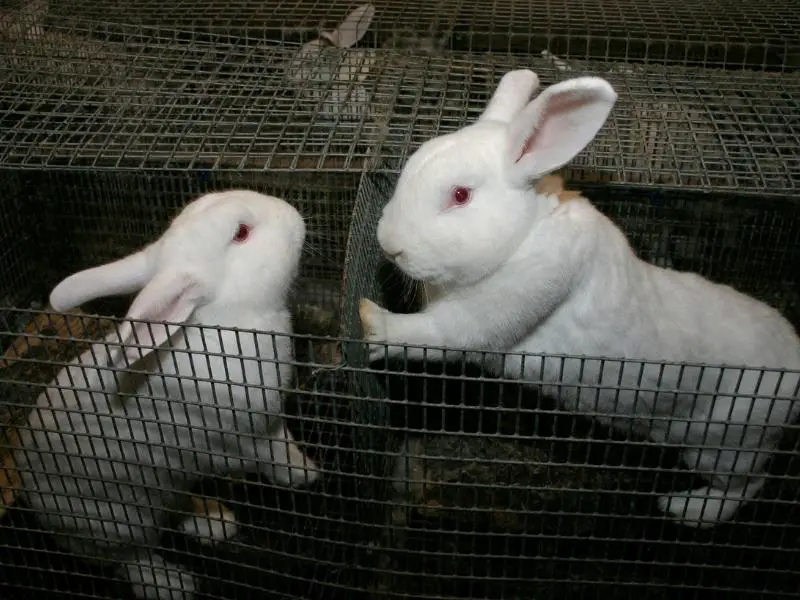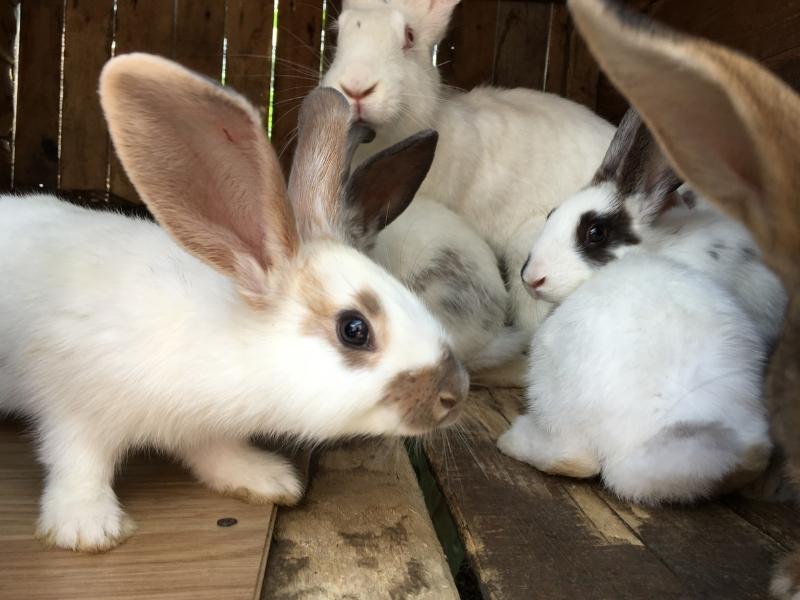Imagine if you could understand the bunny language. It certainly would make things easier for a bunny owner. They could tell you when they had eaten something strange or if the pet parrot’s continuous squawking gave them a headache.
But you can learn to understand your bun. So how do rabbits communicate?
Rabbits communicate using body language, vocalizations, silent cues (or signals), and body postures. They warn other rabbits of danger by thumping the ground. They also display their feelings by honking, purring, sighing, and growling. This communication establishes the hierarchy among rabbits.
If you want to learn more about bunnies and how they communicate, you’ll learn everything you need to know in this guide.
Do Rabbits Talk to Each Other?
Rabbits do talk to each other when they live together. Like humans and other animals, communication is crucial for bunnies to express their feelings and needs. Communicating with one another helps them survive, whether it’s domestic rabbits or wild rabbits.
A rabbit’s body language, silent cues, and vocalizations notify other rabbits about danger if they’re happy, sick, hungry, frustrated, or scared.
If a rabbit has missed a cue or a signal, the other rabbit can become frustrated and angry at the misinterpretation.
Rabbits also apologize to one another in a silent gesture by rubbing their faces against another rabbit’s face.
How Do Rabbits Understand Each Other?
Your bun is a sweet and gentle animal, and they communicate in a quiet and soft manner that humans can sometimes miss. Rabbits are prey animals, and because of this, they are very attuned to other rabbits’ body language and signals.
Missing a signal is literally a matter of life and death (in the wild).
Your bun will understand what another rabbit is trying to communicate through:
1. Their body language and posture, such as sitting up very straight or grooming one another
2. Silent cues, such as thumping
3. Vocalizations, such as growling or grunting
Although these communication methods look strange to humans, rabbits fully understand the message behind them.
Different Ways of How Rabbits Communicate

Here’s a closer look at some of the ways that rabbits communicate with each other:
Body Language and Posture
The main way your bun communicates with others is through their body language and posture. Here’s a look at a few examples:
- How rabbits sit or stand indicates whether they’re anxious, stressed, relaxed, or approachable.
- The speed that their nose wiggles indicate if they’re hot, nervous, relaxed, or sleeping.
- How a rabbit positions its ears can display a question or a flick can signal danger. If their ears are back against their heads at a 45° angle, this is an aggressive warning to another rabbit or human.
Sleeping Positions
When a bunny sleeps next to its owner or another bun, they show the ultimate form of trust. They feel safe enough that they aren’t worried about getting attacked while they sleep.
If you’re trying to bond rabbits and you see them huddled together, this is a good sign as they’re comfortable with one another.
Rabbits like to flop down, sprawl themselves out, or just loaf next to another rabbit or human they trust.
Silent Cues
Rabbits have a lot to say without saying anything at all.
Your bun has its rabbit language and will use silent cues to show another rabbit or a human how they’re feeling, such as:
- Rubbing or grooming one another’s head offers a form of apology or forgiveness.
- Grooming one another (or a human) shows that your bun cares about your cleanliness and well-being. This is a sign of friendship and affection.
In bunny relationships, the dominant rabbit will receive more grooming, indicating that they’re the boss in the relationship.
- Tail signals show a rabbit’s emotions. Wagging their tail means “no.” If the tail is hanging down, it indicates hesitancy. When their tail goes up, it shows confidence or aggression.
- Chasing one another for a short time can indicate disagreement.
- Bowing or nuzzling another rabbit under their chin is an action to show that they want to be groomed.
- Circling another bun or a human shows that they’re happy.
- Mounting one another demonstrates dominance over the other.
- Nipping and nudging at one another can show annoyance and frustration toward the other rabbit.
- Chining is when a rabbit rubs its chin against something to claim it as its own.
- Spraying their urine on objects and areas is a form of territorial marking to show other rabbits that the space is theirs. This is more common in rabbits that haven’t been sterilized.
Vocalizations
Rabbits also communicate by making various sounds such as:
- Clucking, purring, sighing, and humming to indicate happiness.
- Growling, thumping, whining, screaming, and grinding their teeth indicate distress or pain.
- Grunting and honking show that a rabbit wants to mate.
- Wheezing sounds may show that they’re snoring or struggling to breathe.
Do Rabbits Understand Human Language?
Even though rabbits are intelligent animals, they can’t understand human language. However, your floppy-eared friend is more than capable of being trained to know what you are saying through verbal cues and gestures.
Your bun will be able to associate instructions through verbal commands, tone of voice, and gestures.
Your bun can recognize voices, faces, and smells. Some bunnies even go to their owners when they are called.
Here are some simple steps on how to train your bun to recognize certain words and commands:
1. Give your bun a command in a gentle and soft voice. The command should be clear and easy to remember (such as clapping, tapping a surface, and drawing a circle in the air).
2. Show your bun how you want them to respond or react by moving them or mimicking the desired reaction (teaching a high-five by bringing their paw to your hand).
3. Make sure to reward your rabbit if they get something right.
My Last Bunny Thoughts
Taking the time to sit down and watch your bunny communicate is a beautiful and eye-opening experience. These amazing animals have a lovely way of communicating with each other and humans.
By spending time with your bun you’ll be able to learn a lot about rabbits and pick up on what they’re trying to communicate. Another fun activity is to train your bun to follow instructions and do tricks.
Your floppy-eared friend can learn to sit up, jump in a circle, roll over, and give you high fives and kisses on your nose. All you need is love, time, and patience.
Related Articles:

